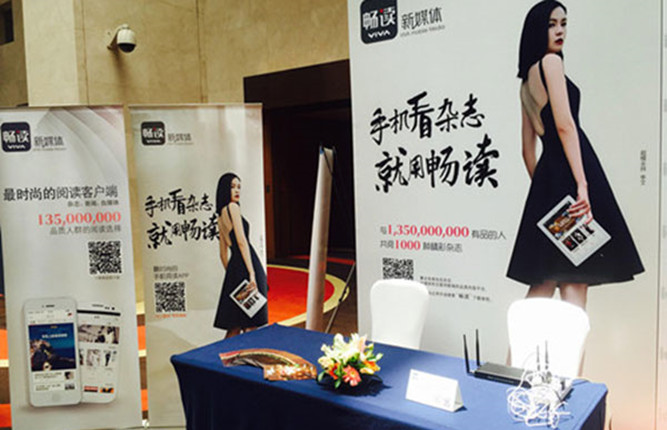Xiaomi faces uphill climb in US: analysts
Updated: 2015-10-29 23:54
By PAUL WELITZKIN(China Daily USA)
|
|||||||||
If Chinese smartphone maker Xiaomi does try to enter the US market, the company will likely face patent litigation, and its business model will be tested by an American consumer used to purchasing phones from a service provider, analysts said.
As domestic shipments wane, Xiaomi is looking to expand overseas. Xiaomi President Bin Lin said at a technology conference on Oct 21 that the company is considering selling its higher-end Mi Note and Mi Note Pro models in the US.
Huawei Technologies Co replaced Xiaomi as China's top smartphone vendor in the third quarter, according to tech industry research company Canalys.
Xiaomi sells its phones directly to the consumer, depending heavily on the Internet to generate sales. This has proven to be a successful strategy in China and other parts of Asia.
In the US, most smartphone buyers purchase a device from a service provider like AT&T Inc. Neil Mawston, executive director of the global wireless practice at Strategy Analytics in the United Kingdom noted that online phone sales are increasing in the US.
"We forecast one in four of all smartphones will be sold through online channels in the US in 2016," Mawston said in an email. "Xiaomi will not be able to target the whole US market, but it can target a select part, such as younger online buyers who might shop at Amazon.
"There is also a large Chinese community in US major cities such as San Francisco that Xiaomi can target for smartphone sales. Xiaomi could take the smartphone fight right into Apple's backyard in California," he added.
William Stofega, program director for mobile phones for International Data Corp (IDC), said Xiaomi will be tested by the US market.
"Google tried to do direct sales once and it didn't work out well," he wrote in an email. "The buying model is changing a bit in the US. This would be an interesting time to try it."
Clay Shirky, author of the new book LITTLE RICE: Smartphones, Xiaomi and the Chinese Dream, said Xiaomi will eventually arrive in the US, but that is not where the company’s competitive advantage lies right now.
"Xiaomi excels at producing beautifully designed phones that are surprisingly cheap (and that's) a strategy that will work best in middle-market countries like Brazil, Nigeria, and Indonesia," Shirky said in an email.
"Xiaomi doesn't have an online only sales strategy as some futuristic move; they sell online because that cuts costs. They have so many opportunities right now that the lessons Xiaomi has learned in China are far more portable to the middle market, and that market is much larger than the US and Europe put together," he said.
All the analysts said Xiaomi is likely to face patent litigation if it enters the US. "Xiaomi already is facing patent disputes with Ericsson in India," Mawston said.
"There is a feeling among holders of large numbers of mobile-relevant patents that Xiaomi has not done enough of their own research to merit being treated as a peer for the purposes of cross-licensing. In addition, Apple has issued very public and pointed complaints about the look and feel of Xiaomi's phones, and especially of the Mi4. Opening up in North America or western Europe may not be worth the legal costs right now," added Shirky.
Even if Xiaomi stays with its direct-selling model, the company will still need to set up a distribution and customer service network in the US.
"The US is geographically huge and Xiaomi will have to spend big money on setting up localized ecommerce sites, a network of warehouses, and contracting delivery firms to ship the models to consumers' homes. It is questionable whether Xiaomi has pockets deep enough at this stage to spread its distribution network across all of the US," said Mawston.
"Xiaomi may want to do this through an affiliate like Best Buy," said Stofega. "The company has to get this right. If a consumer's phone breaks down, they want a replacement right away."
Xiaomi has expanded into Brazil and India, but Mawston said that Xiaomi has so far failed to get traction in either market. "We estimate Xiaomi's smartphone market share was just 1 percent in India and close to zero percent in Brazil in (the second quarter of) 2015. Xiaomi's smartphone internationalization strategy has so far failed to take off," he said.

 Top 10 news apps favored by smartphone users
Top 10 news apps favored by smartphone users
 Intimate Transgressions: More than just pain
Intimate Transgressions: More than just pain
 Want a butler at your home?
Want a butler at your home?
 Rescue operations in full swing as quake death toll hits 365
Rescue operations in full swing as quake death toll hits 365
 Merkel's visits to China aimed at forging 'special' ties
Merkel's visits to China aimed at forging 'special' ties
 Netherlands king enjoys local flavors of Yan'an
Netherlands king enjoys local flavors of Yan'an
 NBA MVP Curry scores 40 points, Warriors win opener
NBA MVP Curry scores 40 points, Warriors win opener
 Top 10 replicas of foreign sites across China
Top 10 replicas of foreign sites across China
Most Viewed
Editor's Picks

|

|

|

|

|

|
Today's Top News
Tu first Chinese to win Nobel Prize in Medicine
Huntsman says Sino-US relationship needs common goals
Xi pledges $2 billion to help developing countries
Young people from US look forward to Xi's state visit: Survey
US to accept more refugees than planned
Li calls on State-owned firms to tap more global markets
Apple's iOS App Store suffers first major attack
Japan enacts new security laws to overturn postwar pacifism
US Weekly

|

|








